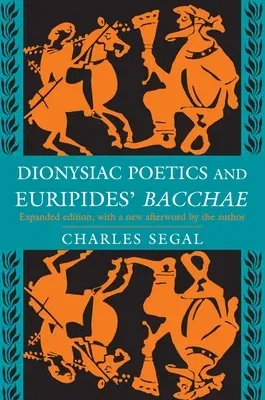Charles Segal
(Author)Dionysiac Poetics and Euripides' Bacchae: Expanded Edition (Revised)Paperback - Revised, 16 November 1997

Qty
1
Turbo
Ships in 2 - 3 days
In Stock
Free Delivery
Cash on Delivery
15 Days
Free Returns
Secure Checkout

Print Length
440 pages
Language
English
Publisher
Princeton University Press
Date Published
16 Nov 1997
ISBN-10
069101597X
ISBN-13
9780691015972
Description
Product Details
Author:
Book Edition:
Revised
Book Format:
Paperback
Country of Origin:
US
Date Published:
16 November 1997
Dimensions:
23.22 x
15.65 x
2.84 cm
ISBN-10:
069101597X
ISBN-13:
9780691015972
Language:
English
Location:
Princeton
Pages:
440
Publisher:
Weight:
625.96 gm